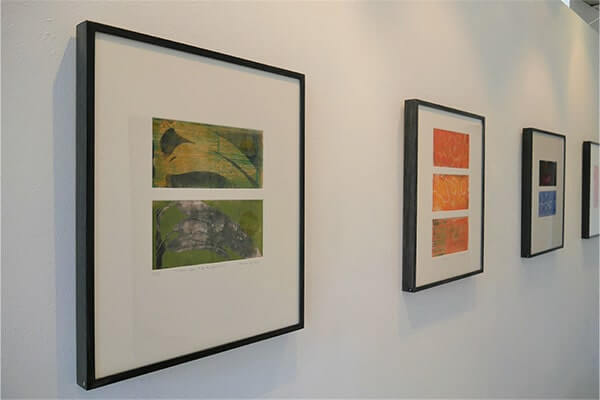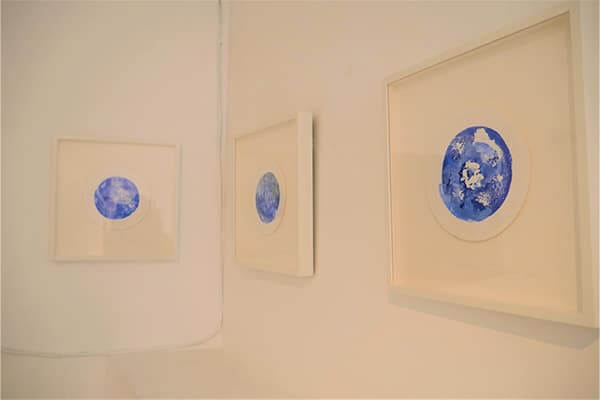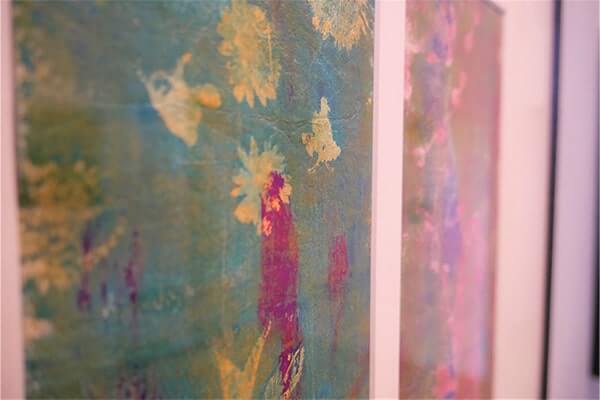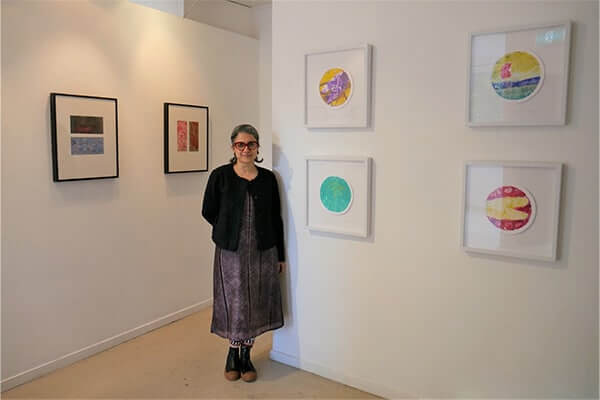Visual artist Manasee Jog’s latest printmaking exhibition began in the swirls of a washing machine.
Five years ago, she migrated from Bengaluru to Australia, and whilst completing her PhD at RMIT University, inspiration came from traditional Kutch textiles her late mother had bequeathed to her.
“I started washing some of the textiles here in Melbourne, in the washing machine, using colour catchers,” Manasee Jog described to Indian Link. “Every time I put in one of those lovely cotton or Gaji silks which were hand-dyed, some of which are 25 or 30 years old, they would leave a sort of mosaic [on the colour catcher], like visual scribbles”.
“Every time I’d wait for it to come out, because I’d be so excited by the pattern that was emerging – I felt they were almost like messages from my mother, it felt connected to her. I thought then about how I could respond to this as an artist, so I wrote messages back. That’s what my pieces are in this exhibition – messages into the ether.”

Jog used the unique stained colour catchers as canvases for monoprints, layered with impressions of found objects in her environment; ‘It’s never going to be the same, is it?’ features pressings of a Silver Princess Eucalyptus leaf taken from the backyard of her home in Brunswick.
And so her exhibition became, as she describes, a conversation between past and present.
A debut solo show, ‘Memorising the past to see the future: an exhibition of imprints’ features a selection of works from her PhD exploration alongside those created whilst in India.
“This was a very personal project that I began as part of my PhD. It’s been a very serendipitous journey and has translated into these diptychs and triptychs,” she says.
Coming full circle
Simultaneously, the exhibition features print pieces made during Manasee Jog’s 2022 artistic residency at La Petite Maison Auroville, Tamil Nadu, displayed opposite her Melbourne works. Jog says these works also deal with memory and materiality but in a different geography.
“I spent the month in a completely green space – it was a property in the centre of an acre of land. There was nobody there except my host,” she says.
“There were so many new experiences in that space, and I think my head went into many spaces in terms of memories. A lot was happening in my personal life too when I was in India, and it felt like coming full circle, so I did these in a circular format; it’s about regeneration and renewal.”

These circular monoprints also feature found objects from the greenery around her; ‘Bluesy-Oranges’ uses the rind and flesh of an orange grown in the La Petite Maison property.
“[Bluesy-Oranges] really speaks to me about childhood memories – I spent so many years climbing orange trees and being bullied for it, so it does bring out blues, emotions, but it also brings out happy times. Just sitting in a tree, cackling, throwing oranges at my cousins.”
New space, old memories
For Jog, who makes her own gelatin plates, printmaking is a very tactile artform, and one which links strongly to the visual culture in India.
“The culture in India is about making, and the whole idea of ‘making’ interests me; the process of making the plate, to selecting what goes where, to physically putting pressure on the paper, and that surprise you get when you pull it out, all really attract me to printmaking.”

The shift to a new country and a new way of life initially took a toll on Jog’s practice, and it took her five years to find her feet again.
“When you move into a new space, there’s so much that needs to be built for yourself in terms of self-determination and agency,” she says.
“Even as a professional, I have around 15 years of work experience, but none of it was counted when I came here, so that was a bit jarring. I had to push myself, figure out how to put myself out there, and keep going.”
Mounting this exhibition has helped her process the past and gather the agency to navigate the future in Australia.
“Sometimes memories become a bit hazy, and [I want to ask] how do you remember them with your craft, in turn, giving you self-determination because your work is going forward and you can creatively express yourself,” she says.
“I want [audiences] to take away their own messages and make their own deductions, maybe even their own sort of memories.”
‘Memorising the past to see the future: an exhibition of imprints’, by Manasee Jog is on at the Rubicon ARI, Level 1/309 Queensberry Street, North Melbourne, until April 29th.





